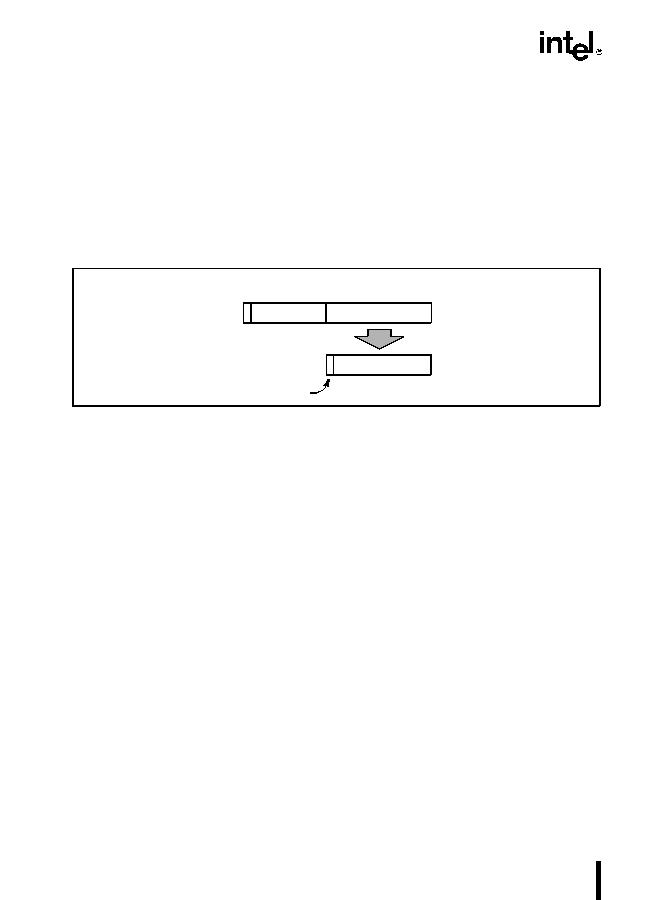7-4
FLOATING-POINT UNIT
7.2.2.Floating-Point Format
To increase the speed and efficiency of real-number computations, computers or FPUs typically
represent real numbers in a binary floating-point format. In this format, a real number has three
parts: a sign, a significand, and an exponent. Figure 7-2 shows the binary floating-point format
that the IA FPU uses. This format conforms to the IEEE standard.
The sign is a binary value that indicates whether the number is positive (0) or negative (1).
The significand has two parts: a 1-bit binary integer (also referred to as the J-bit) and a binary
fraction. The J-bit is often not represented, but instead is an implied value. The exponent is a
binary integer that represents the base-2 power that the significand is raised to.
Table 7-1 shows how the real number 178.125 (in ordinary decimal format) is stored in floating-
point format. The table lists a progression of real number notations that leads to the single-real,
32-bit floating-point format (which is one of the floating-point formats that the FPU supports).
In this format, the significand is normalized (refer to Section 7.2.2.1., Normalized Numbers)
and the exponent is biased (refer to Section 7.2.2.2., Biased Exponent). For the single-real
format, the biasing constant is +127.
7.2.2.1.NORMALIZED NUMBERS
In most cases, the FPU represents real numbers in normalized form. This means that except for
zero, the significand is always made up of an integer of 1 and the following fraction:
1.fff...ff
For values less than 1, leading zeros are eliminated. (For each leading zero eliminated, the expo-
nent is decremented by one.)
Figure 7-2. Binary Floating-Point Format
Sign
Integer or J-Bit
Exponent
Significand
Fraction

